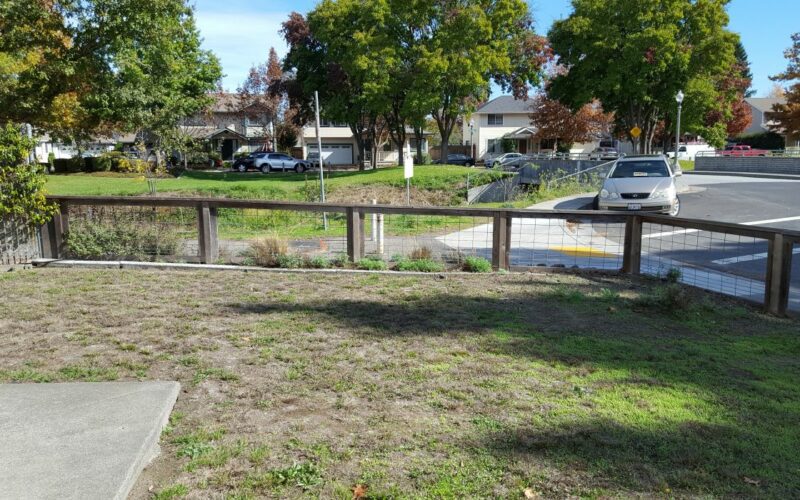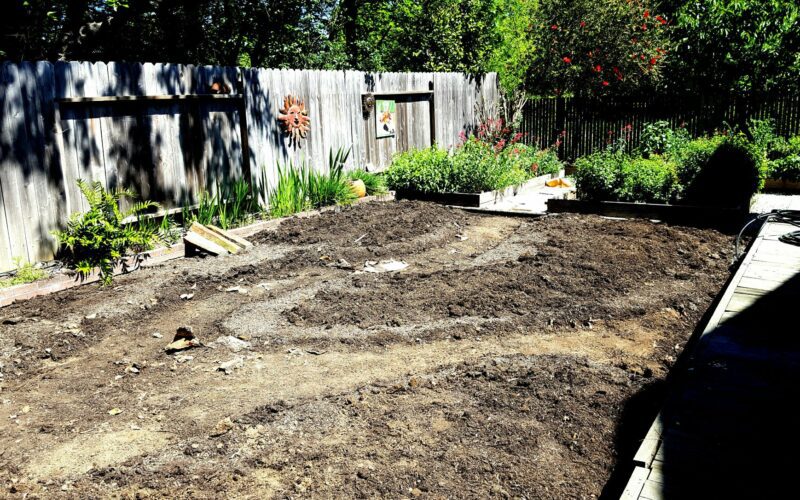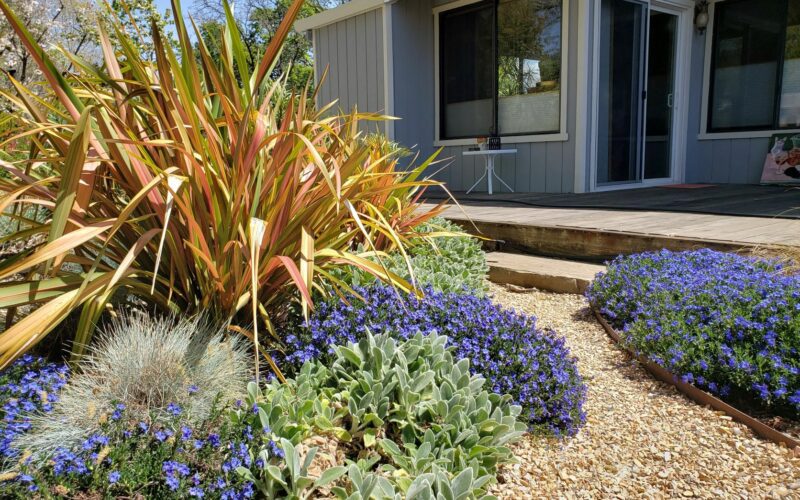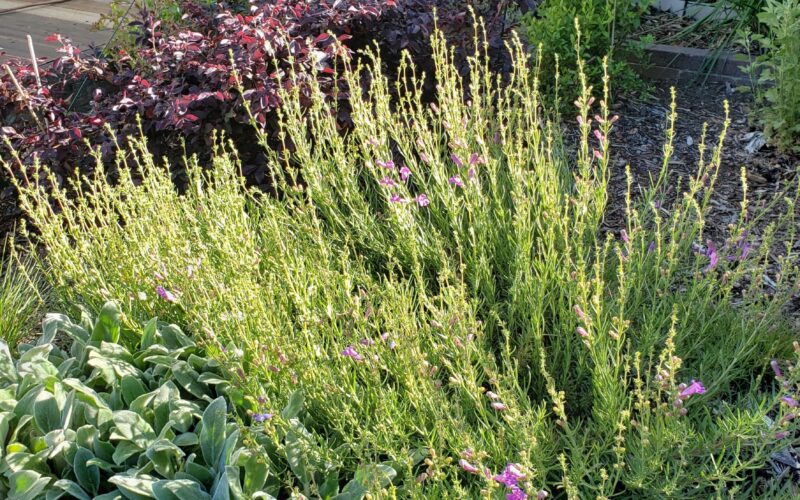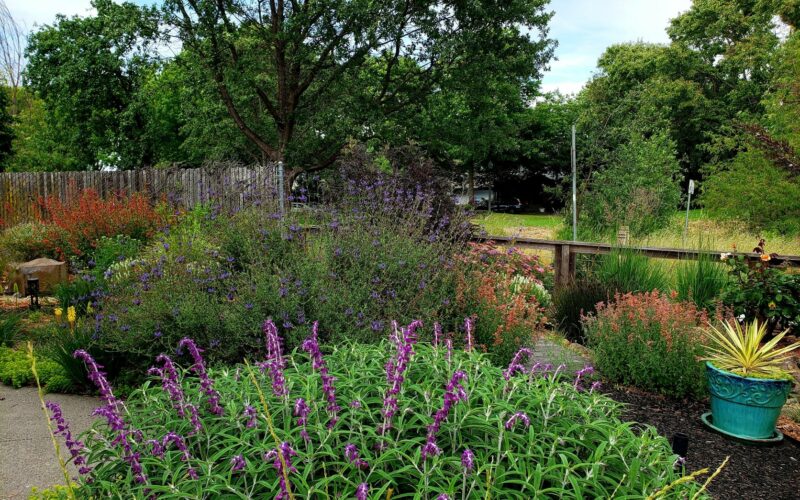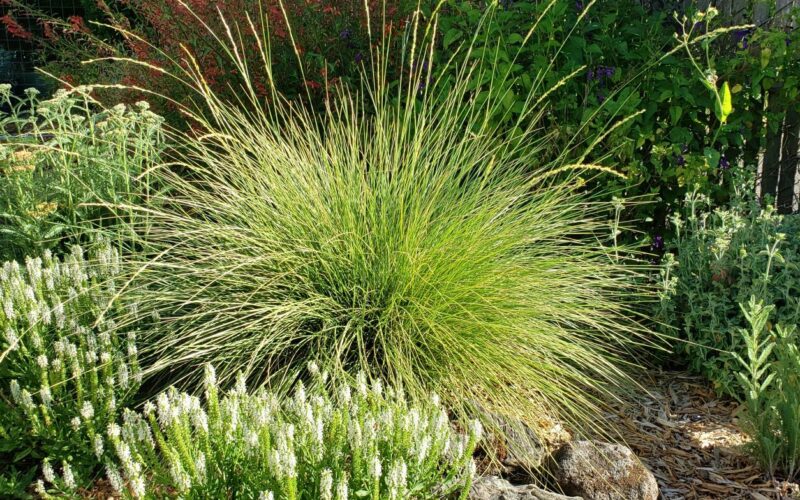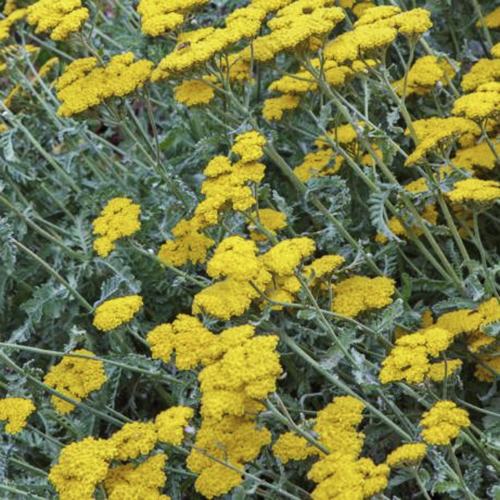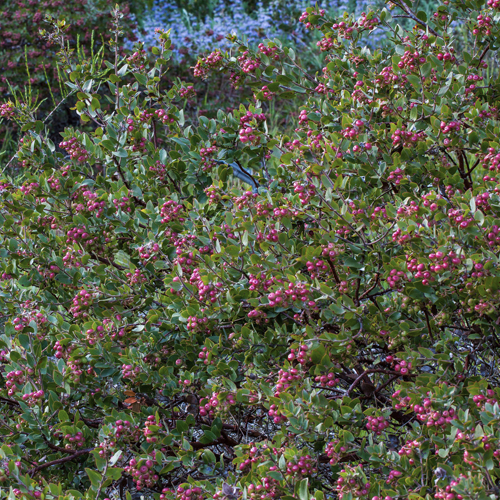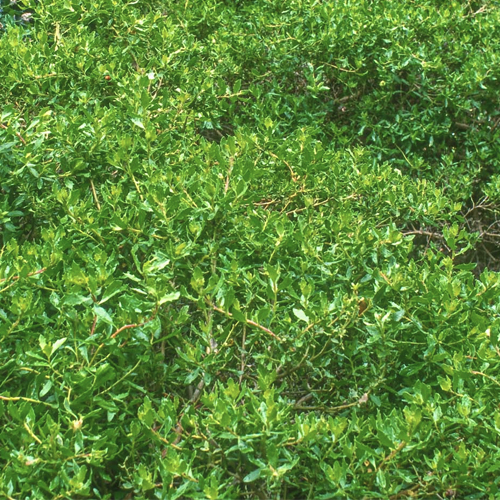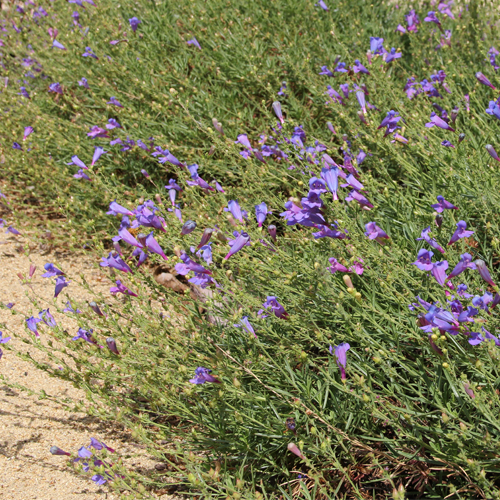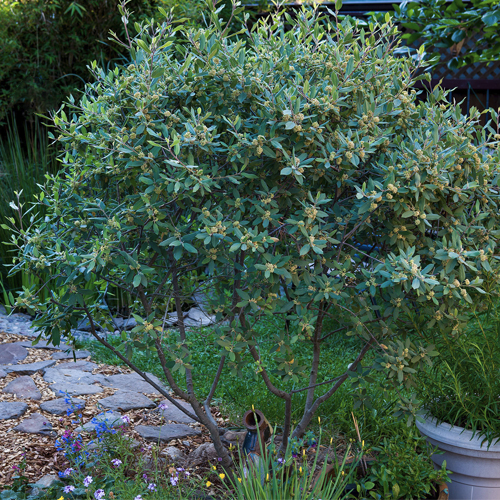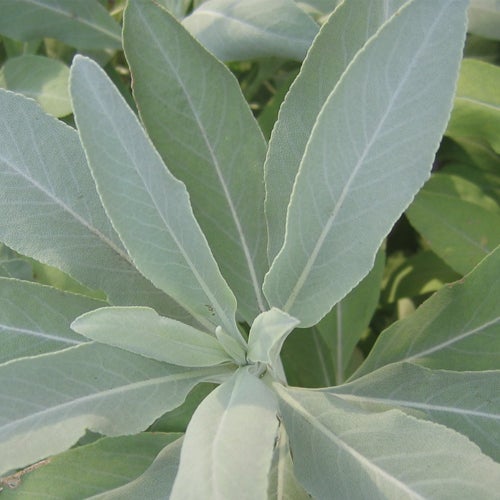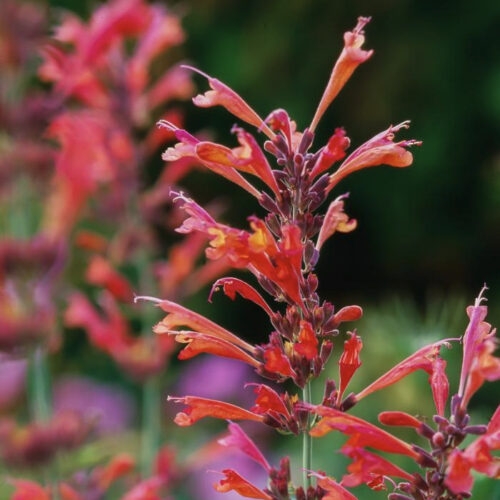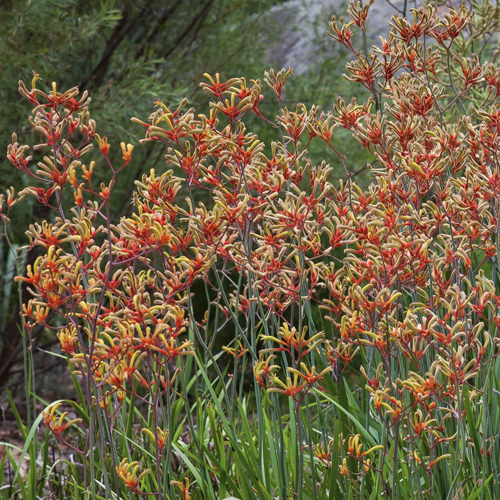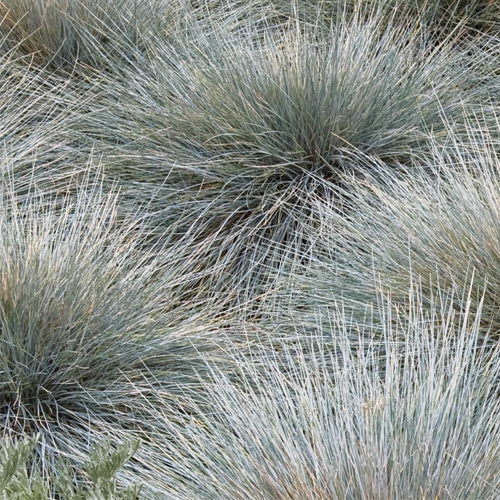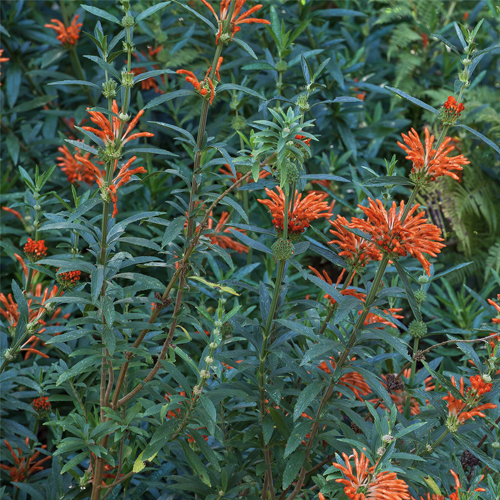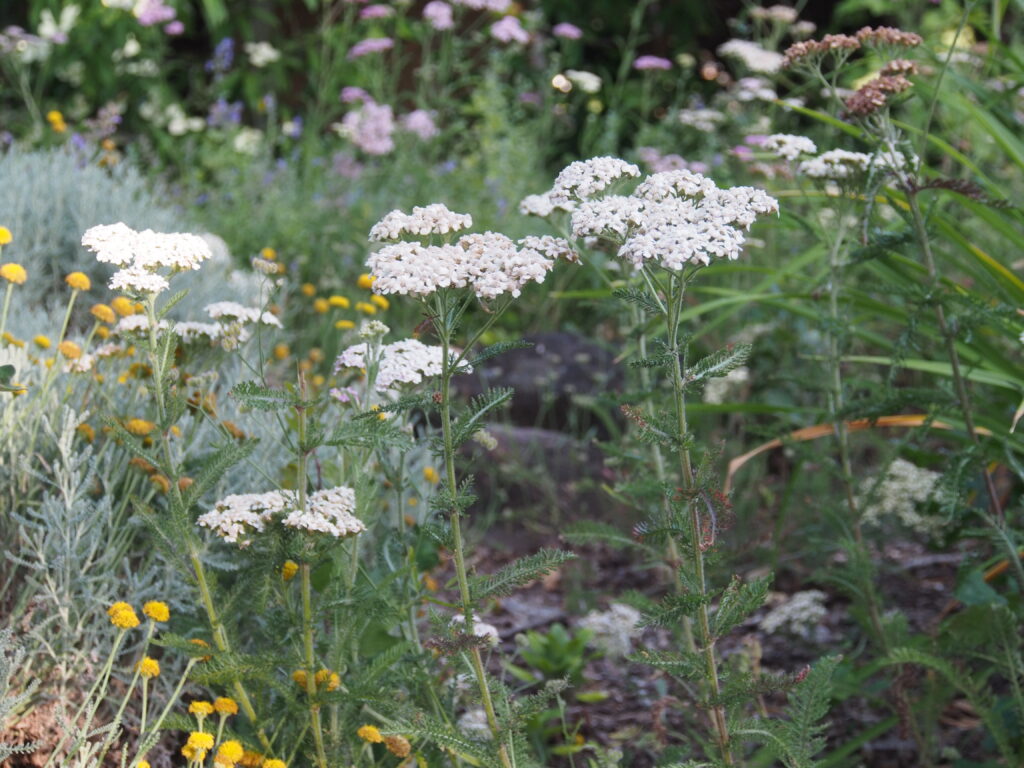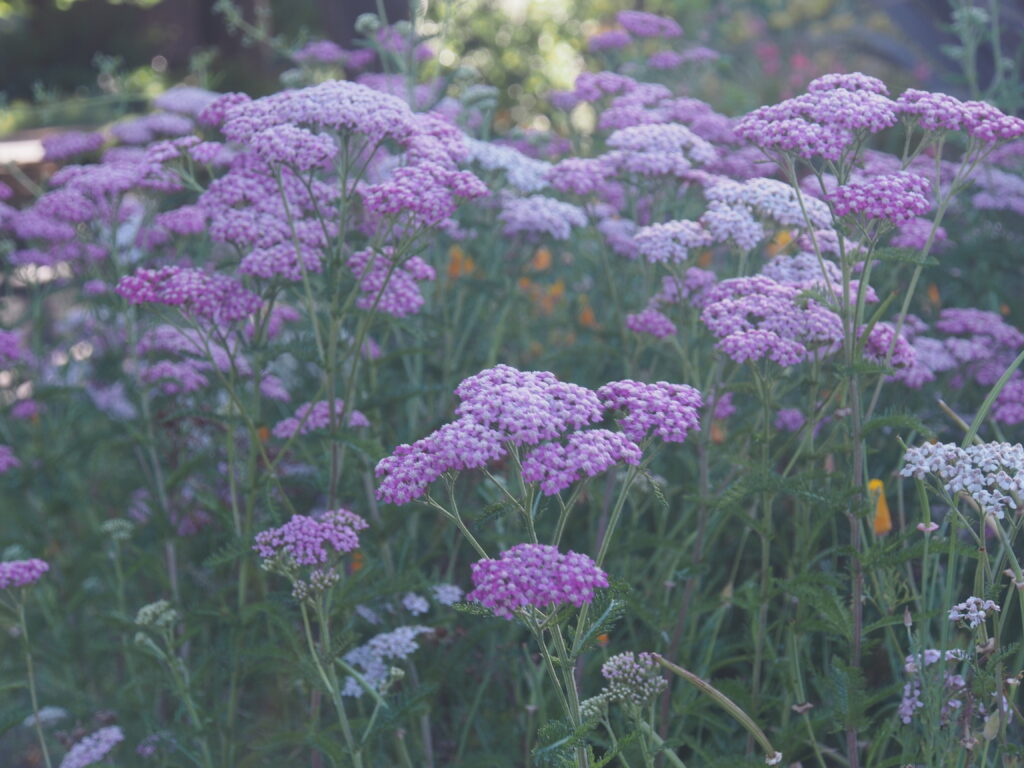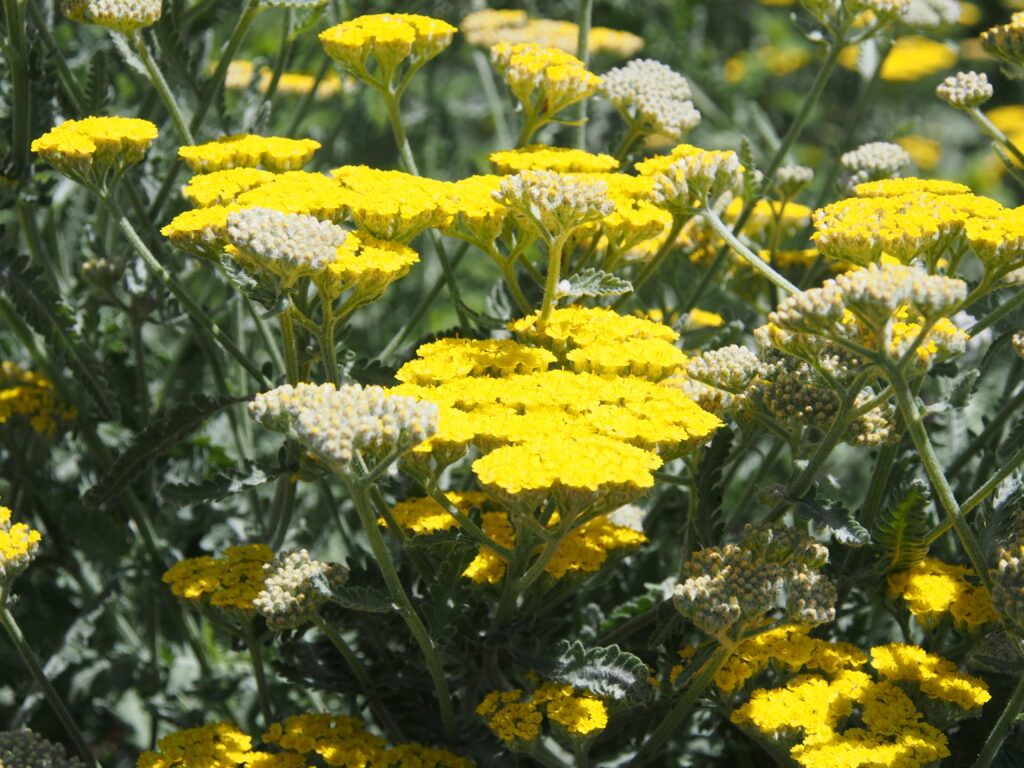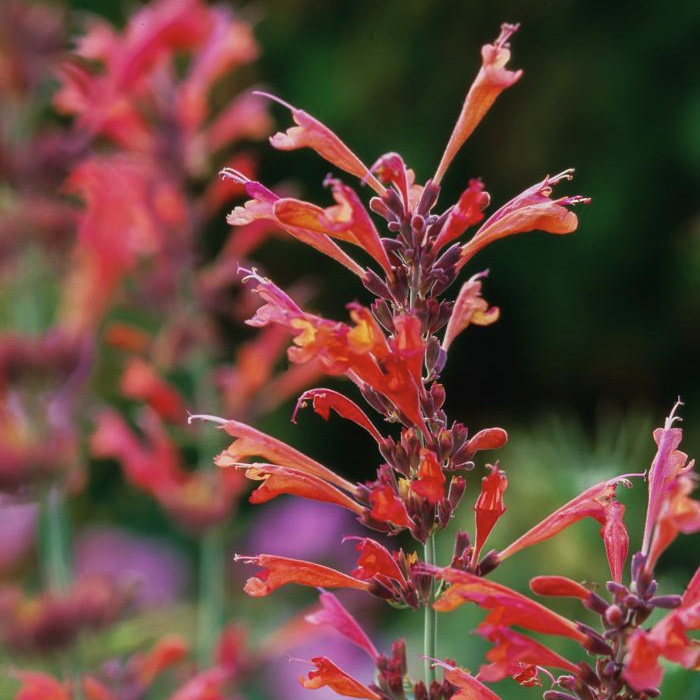Color in Cotati
BACK TO FULL TOUR
Garden Features
Drought Tolerant
Edible Garden
California Natives
Deer Resistant
Drip Irrigation
Pesticide Free
Rainwater Harvesting System
Rain Garden
Sheet Mulching
Smart Irrigation Controller
Urban Homestead
Wildlife Habitat
Lawn be gone! I stopped watering my grass during the 2011-2017 drought, the driest period in California’s history. To learn how to convert my lawn to a drought tolerant garden, I attended workshops at the local nurseries and volunteered with Daily Acts to weed and plant small community gardens. Robert Kourik’s book on drip irrigation installation and maintenance was essential for creating my sustainable gardens. After my projects were completed, I received ‘cash for grass’ through the City of Cotati and the Department of Water Resources ‘Turf Rebate’ programs.
I started with the backyard to test my skills at lawn conversion. I layered the dried grass in the backyard with heavy duty recycled cardboard, soil, and compost and created mounds for more dimension. After agonizing over the final choice of gravel, the new permeable, curving Sonoma Gold path created multiple planting areas that made the once flat space seem much larger. Native and drought tolerant grasses and perennials are watered with drip irrigation topped with fresh mulch each spring to minimize water loss. The plants provide splashes of blue, gray, magenta, chartreuse, apricot, purple, and yellow for hummingbirds, bees, butterflies, and dragonflies. They include Butterfly Bush, Mahonia (Barberis), Penstemon, Yarrow, Orange New Zealand Sedge, Apricot Mallow, Jerusalem Sage, Salvias, and a Bottle Brush tree. Raised beds of different sizes and sandstone pathways enhance the design. Umbrellas and chairs inspired by the flower colors provide shady sitting areas surrounded by ceramic pots filled with succulents and annuals.
The larger front yard was designed by Permaculture Artisans of Sebastopol with my goal to capture and retain rain from my roof. Shallow bioswales were carved into the adobe clay and water was directed from the gutters to small basins within the swales. Bioswales are vegetated, shallow, landscaped depressions designed to capture, treat, and infiltrate stormwater runoff as it moves downstream. Wooden bridges provide easy ‘swale crossings’ and connect to black mulch pathways. I layered the front with more cardboard, soil, and compost and planted both native and drought tolerant grasses, perennials, and trees and moderate water users that are fed by drip irrigation and topped with mulch. Sonoma volcanic rocks and boulders were dispersed throughout the garden to provide habitat for mosses, lichen, snakes, lizards, and spiders. A columnar basalt water feature provides gentle flow for birds and thirsty neighbor cats. A variety of purple, pink, red, orange, burgundy, and rust colored blooms, bark, and foliage abound throughout the spring, summer, and fall. ‘Dark Shadow’ Tea trees and an ‘Eve Case’ Coffeeberry shrub create a privacy barrier in the front. The bioswales are lined with Blue Moor Grass and Blue-eyed Grass, bordered by Lemon Popsicle Poker Plant. A special garden highlight includes a Black Lace Elderberry shrub with pink flower clusters accented by apricot Hummingbird Mint and white Snow Hill Sage bushes. A narrow area on the side of the driveway has two 20-year-old Sonoma County variety Gravenstein apple trees. A separate new bioswale captures rain from my neighbor’s gutter and ‘Howard McMinn’ Manzanita and White Sage provide contrast to the bountiful fruit trees.
